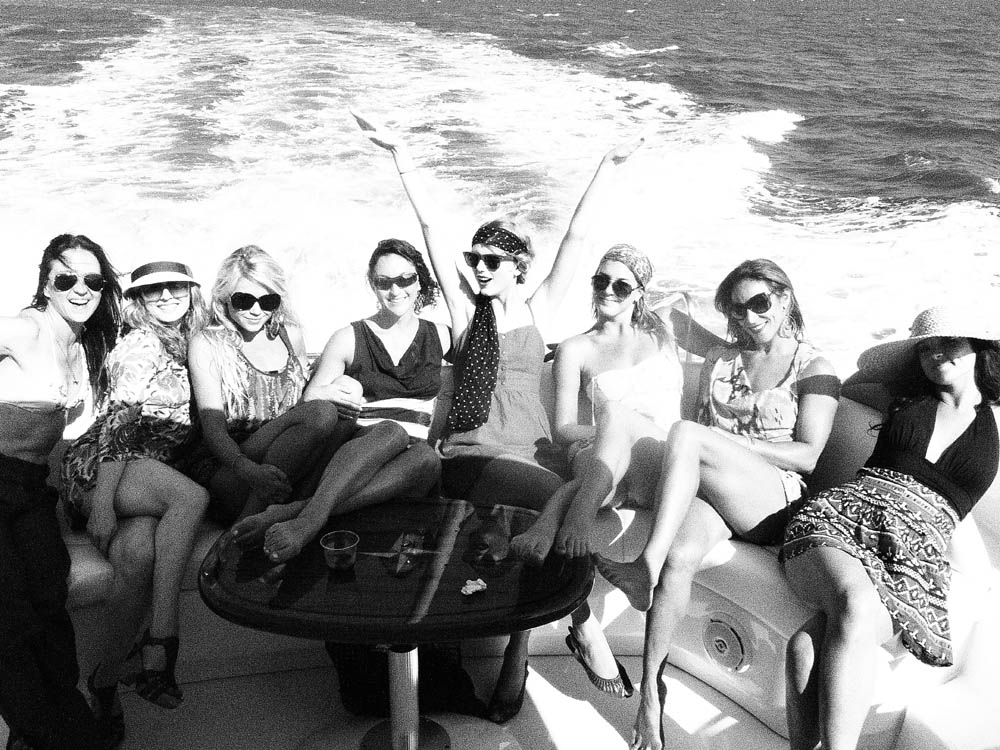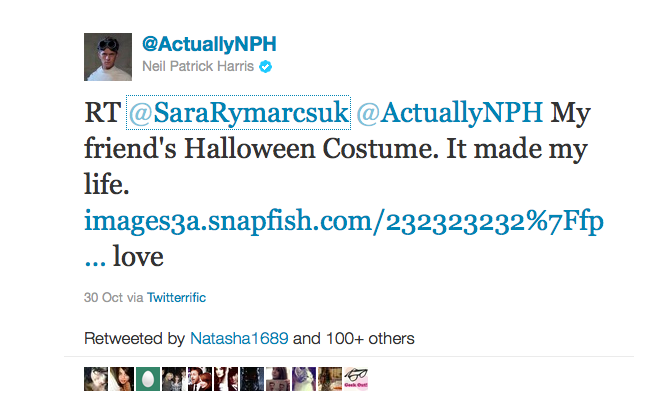About a month ago, The New Yorker ran a fascinating profile of Taylor Swift. After noting that in the past five years, Taylor Swift has sold more albums than any other musician (a cool 20 million), the writer points to the not-so-secret of Swift’s success: “Swift’s ability to hold her audience’s interest reflects, in part, a keen understanding of what fuels fan obsession in the first place: a desire for intimacy between singer and listener.”
The piece goes on to describe how Swift’s mother handpicks superfans from the audience of her concerts and brings them backstage for meet-and-greets. Swift prefers this to a massive CD signing line or expensive VIP party; she wants to speak to the people she’s speaking to, be it in her music, through her various products, or online. The rules are there is no video allowed, there is one group photo, and one item will be signed per person.
Swift writes personal notes to local radio station managers who play her music. The New Yorker prints an example:
Eric!
Thank you so much for coming to my show the other night, it meant a lot to see so many of my friends from the station. And thanks for coming to say hi to me backstage!
Love,
Taylor
Yesterday, she posted a photo blog from her vacation with her tour mates on her website. She writes,
I’m a girl of many phases. Sometimes I work out, sometimes I don’t, sometimes I listen to music constantly, sometimes I become obsessed with a piece of advice I’m given, sometimes I want to do nothing but watch Friends marathons, sometimes I write in my journal every night, then I’ll skip a month.. And sometimes I take lots of pictures of what’s going on in my life. For these three days, that’s what I did. And because your niceness is why I get to take vacations, I thought I’d share them with you.
Because your niceness is why I get to take vacations. It’s just lovely. She’s being transparent about making money from her fans, and thanking them for it. It’s hard not to like her, and I was really trying.

I’ve written here about artists hiring companies to handle their social media. We’re deep into a quantity-over-quality age. The argument for more content is the best content is that some people wake up every morning and read the New York Times that was delivered to their door, some people check Facebook, some scroll through Twitter, and some (I’M LOOKING AT YOU, NOONA) have the TV on in the background all day and go from Good Morning, America (is that the one with Matt Lauer?) to PBS to Oprah (is that still on?). Consequently, wherever people can get their news is where we should be placing or attempting to place our clients. But news items, album pre-orders, and exclusive ticket offers aren’t want fans want. Fans want to know that somewhere in the world an artist they admire is on their computer/iPhone/iPad thinking about them, aware of their existence. A girl with 12 followers Tweeted a photo of her friend dressed up as Dr. Horrible for Halloween to Neil Patrick Harris. He Tweeted back and said he loved it.
He then posted photos of his own family in costume. When he Tweets about a movie or a new season of his TV show, you want to see it, even if you don’t really want to see it. I mean, we’ve seen his spawn dressed as Smee; he’s our friend!
When we update Hilary’s Facebook page, we’re careful to sign posts “HH’s team”, just so it’s perfectly clear that it’s not her. When big projects are launched or albums are released, I make sure to ask her for a message for her Facebook fans. Those posts are signed by Hilary, and usually get 200+ Likes within minutes. She updates her YouTube channel and Tweets as her violin case (@HilaryHahn was taken; @violincase was not). It takes time, but not so much if you actually enjoy doing it, which she does.
It’s easy to see how our need for intimacy with the artists we admire can be translated into album and ticket sales, but I think this carries into the fundraising realm as well. Kickstarter.com, self-described as “A new way to Fund & Follow Creativity”, is a site that solicits public funding for projects that goes directly to the artists. The project manager decides how much money he or she needs to complete it, and if that goal is not reached, the money is returned to the funders. If the amount is raised (or exceeded), the project is funded. Funders are rewarded–not unlike donors at any organization–with perks for different donation amounts. $50 toward a chamber music group may get you a signed CD, while $5000 would get you a private performance.
Composer Missy Mazzoli recently funded her group, Victoire’s, tour to Europe. With 33 backers, she raised $1797, surpassing the $1200 goal. She said she was “pleasantly surprised by how informal the whole thing felt while still being slick.” She was comfortable writing in a more casual tone: like a note to friends rather than a grant application. Looking through the site, you get the sense that all the content was written by the artists themselves, not some clever marketer. There’s a lot of “Oh man, you guys…” and “I really need your help!” A sci-fi harpist writes, “Yippeee!!! I’m so happy to report that we are now over 100% funded.”
On her Kickstarter page, Missy took the time to explain the back story of why they needed the money for their European tour rather than simply asking for money and posting a group bio:
We’ve been invited to perform in Europe this fall, in a combination of solo shows in Amsterdam, Essen and Berlin, and a set of dates opening for the unbelievable and inspirational My Brightest Diamond (Shara Worden) in Belgium and Paris. This is a dream-come-true for us, and we only need a little more financial support to make this a reality. Backers of this project can receive a BUNCH of priceless goodies in return for their donation, including two secret, unreleased Victoire tracks, signed CDs from Shara Worden and Victoire, limited edition signed posters, and a sampler pack of great recent albums put out by New Amsterdam Records. Your donations will be used to help fund Victoire’s travel costs in Europe – nothin’ fancy, just a big ole van and some expensive European petrol! Thank you for supporting us and for helping us make this trip possible!
Missy was given advice from an artist friend who had just funded a CD via Kickstarter that she should set the goal at a level that she knew she could get from actual family and friends. She should exclude strangers and social media “friends” from her thinking. With Kickstarter, then, an artist has a formal way of asking personal contacts for money and an informal way of asking unknown supporters for money.
I asked Missy if she thought this would eventually be the way all arts funding would go, that is, will people want to fund an individual artist over a symphony orchestra? Will composers have to come to presenters with pre-funded projects? She hopes not, she said, but there is a way to put artists out there without the pressure of providing a fully-funded project. She’s been at orchestra post-concert functions where the funder of her piece has been pointed out to her across the room; “Shouldn’t I be at dinner with them, then?” she asked. With dwindling funding, presenters can and should use artists more in their efforts. If your organization has made an effort to personalize the funding process, leave a note in the comments!
OK now go read the Tiger Beatdown post on how my new girl friend Taylor Swift is going to kill us all in our sleep.


The great Old fashion PHOTO